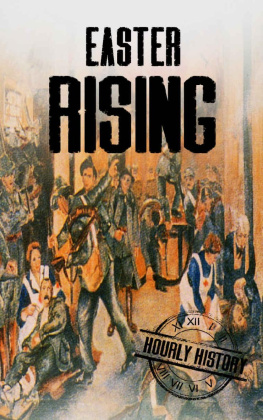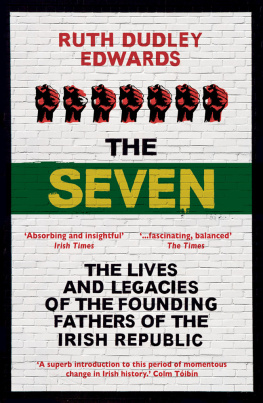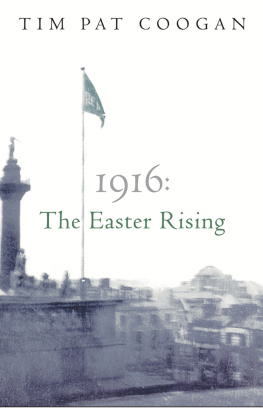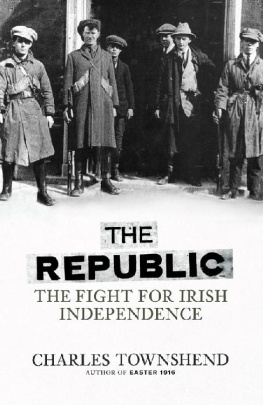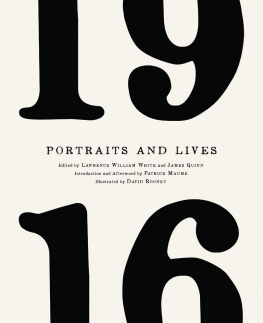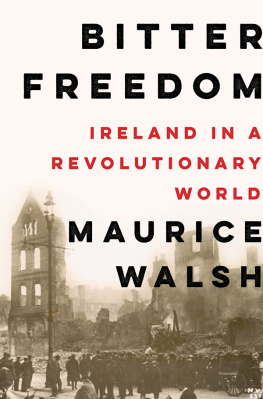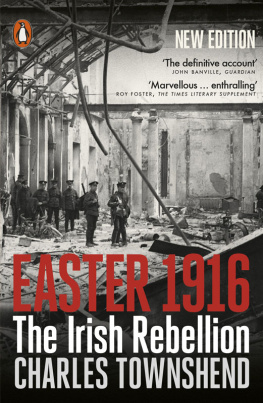
Copyright 2014 by R. F. Foster
First American Edition 2015
All rights reserved
For information about permission to reproduce selections from this book,
write to Permissions, W. W. Norton & Company, Inc.,
500 Fifth Avenue, New York, NY 10110
For information about special discounts for bulk purchases, please contact
W. W. Norton Special Sales at specialsales@wwnorton.com or 800-233-4830
Production manager: Julia Druskin
ISBN 978-0-393-08279-1
ISBN 978-0-393-24592-9 (e-book)
W. W. Norton & Company, Inc.
500 Fifth Avenue, New York, N.Y. 10110
www.wwnorton.com
W. W. Norton & Company Ltd.
Castle House, 75/76 Wells Street, London W1T 3QT
For Jay Tolson
I have met them at close of day
Coming with vivid faces
From counter or desk among grey
Eighteenth-century houses.
I have passed with a nod of the head
Or polite meaningless words,
Or have lingered awhile and said
Polite meaningless words,
And thought before I had done
Of a mocking tale or a gibe
To please a companion
Around the fire at the club,
Being certain that they and I
But lived where motley is worn:
All changed, changed utterly:
A terrible beauty is born.
W. B. Yeats, Easter 1916
PLATES
TEXT ILLUSTRATIONS
Anti-recruitment poster (National Library of Ireland, Prints and Drawings)

Molly Childers (left, holding rifle) and Mary Spring-Rice running guns from Germany to Ireland aboard the Asgard, July 1914.
The revolutionary era in Ireland during the early twentieth century was famously described by the historian F. S. L. Lyons as embodying an anarchy in the mind and in the heart, an anarchy which forbade not just unity of territories, but also unity of being, an anarchy that sprang from the collision within a small and intimate island of seemingly irreconcilable cultures, unable to live together or to live apart, caught inextricably in the web of their tragic history.minds about political possibilities to bring about a revolution against the old order, which included not only government by Britain but the constitutional nationalism of the previous generation.
The Irish revolution was sparked into life (ostensibly) with the Rising, or rebellion of 1916, when a small group of extreme Irish nationalists, organized by the Fenians, or Irish Republican Brotherhood, mounted a week-long insurrection in Dublin, occupying public buildings and creating mayhem before the British Army regained control. The revolutionaries had originally expected substantial help from Germany, with which Britain (and therefore Ireland, officially) was at war; when this went astray, they went ahead anyway, in what became a gesture of sacrificial violence rather than a serious challenge to Britains government of Ireland. That government was already, so to speak, under review, and a measure of Home Rule for Ireland had been passed by the British parliament in 191214, granting Ireland some self-government; this had been the achievement of years of dedicated campaigning and negotiation by the leader of parliamentary nationalism, John Redmond, the inheritor of Parnells mantle. But the implementation of a Home Rule parliament had been postponed for the wars duration, and in any case had been blocked by resistance from Protestants and unionists in the north-east of the country, bringing Ireland to a point of threatened civil war just before the world war broke out in August 1914. As in Russia, a sense of dammed-up domestic crisis was released by international war; but the outbreak of hostilities also constituted, for a minority of Irish revolutionary purists, an opportunity they had been anticipating for a long time.
But when did the Irish revolution begin? The period that started with the Easter Rising of 1916 and ended with the Civil War of 19223 has been closely excavated, particularly since the emergence of illuminating new sources such as the witness statements of the Bureau of Military History. However, what might be called the pre-revolution the quarter-century between Parnells death in 1891 and the insurrection in 1916 has not been explored so intensively, though the broad frameworks of Irish constitutional politics and political mentalities have been suggestively profiled.dedicated minority into revolutionary attitudes by 1916, bringing more than 2,000 rebels on to the streets of Dublin and instigating years of guerrilla war, have received less attention.
A new look at the pre-revolutionary period in Ireland is all the more necessary, because traditional approaches to understanding revolutionary change in terms of class or ideology seem inadequate today. We search now, instead, to find clarification through themes of paradox and nuance; we have become interested in what does not change during revolutions, as much as what does.
Nonetheless the idea of the Irish revolution is still in process of definition, and not just its duration. How far was it a revolution in the generally accepted meaning of the word? Should it be seen in its own terms, or mapped against other upheavals in contemporary Europe? It is now an accepted clich though a spectacular exaggeration that events in Ireland from 1916 to 1921 served as a model for later revolts elsewhere.
How relevant is this to the Ireland of the same era? How far can we reconstruct the processes, networks, experiences and attitudes of the Irish revolutionary generation around the beginning of the twentieth century? What happened in 1916 drew attention to a change of mentality, a change in hearts and minds, whereby within two or three years Irish opinion would shift dramatically away from the old, constitutionalist Home Rule idea, and towards a more radical form of republican separatism, achieved if necessary by force of arms. Gradualism was replaced by revolution: it is in these years, especially from 1918, that a revolutionary vanguard appeared in an organized way, and sophisticated structures of subversion and rebellion emerged.Though these latter phenomena owed much to previous formations in Irish history.)
Nonetheless, the idea of a preceding sea-change in Irish opinion persists, and most of the book that follows is devoted to trying to trace it, at the personal level of individual lives. It attempts to recapture the voices of people from the era, rather than relying too heavily on later memories and rationalizations and to do this by charting opinions evidenced in letters, reflections and diaries. Some of these voices became mainstream, and some marginalized. I have tried to profile a selection of the activities and influences which moulded the revolutionary generation a concept examined in the first chapter. The book also attempts to indicate the ways in which personal lives and predilections reflected and anticipated the larger, more seismic shifts that came into view during 1916 and its aftermath. The emphasis does not fall exclusively upon people who became prominent revolutionaries (though several of the cast of characters did). Rather, I am attempting to characterize the worlds of students, actors, writers, teachers, civil servants; often from comfortable middle-class backgrounds, and often spending part of their lives working in Britain. They were not, by and large, from families with a Fenian or extreme separatist background; revolution (and, often, anti-British feeling) did not seem to be in their objective interests; their radicalization came by degrees. Established politics, and the high culture of Yeats and his circle, are seen as less relevant than the experiences and ideas of more obscure people, expressed as far as possible in their own words. This involves sources such as diaries kept by the young Cork republican activist Liam de Riste, forever starting up clubs, magazines and societies; his friend the playwright and eventual hunger-striker Terence MacSwiney; the radical Quaker Rosamond Jacob, determined to insert herself into the world of Gaelic and nationalist revival which she sensed happening around her; the Gaelic League organizer Piaras Basla, migrating from Liverpool to Ireland in search of some kind of romantic destiny; and the Trinity law students Kevin OShiel and Diarmuid Coffey, whose journals chart their cautious shift from moderate to advanced nationalism. Large collections of letters, journals and unpublished autobiographies, through which similar trajectories can be traced, exist in a number of Irish locations. Several old revolutionaries had devoted their mature years to amassing material on the fabled years of the struggle, collecting accounts, documents and memories from their contemporaries much of it now in the invaluable archives of University College, Dublin.
Next page

